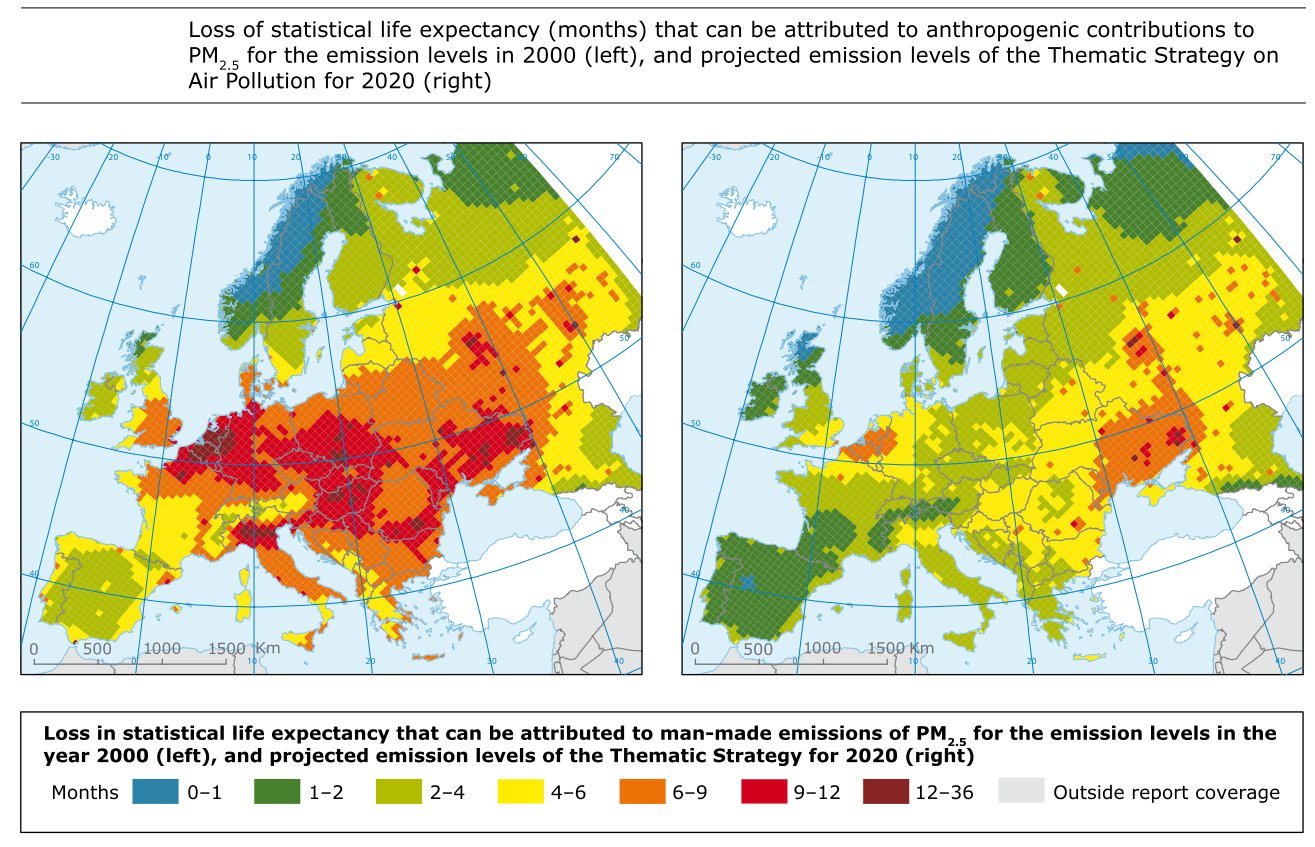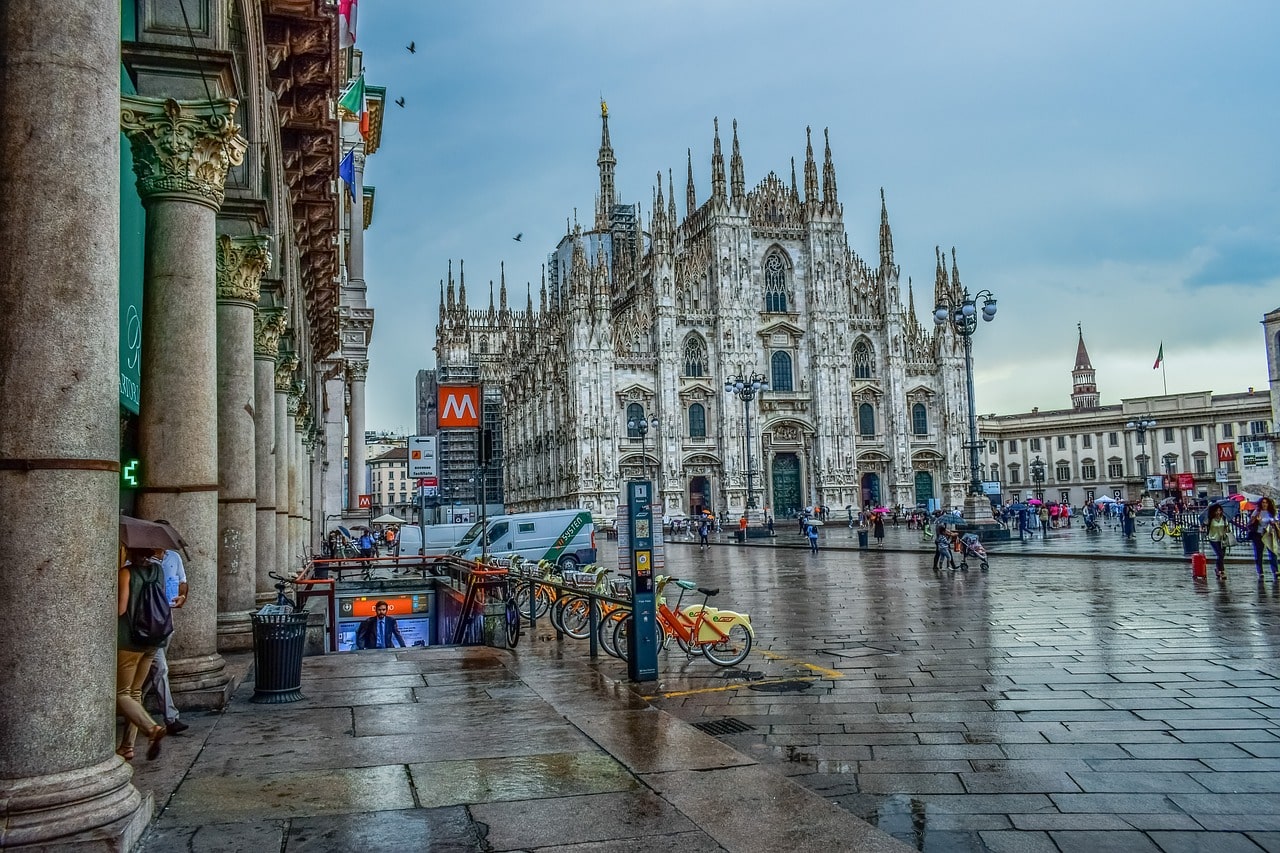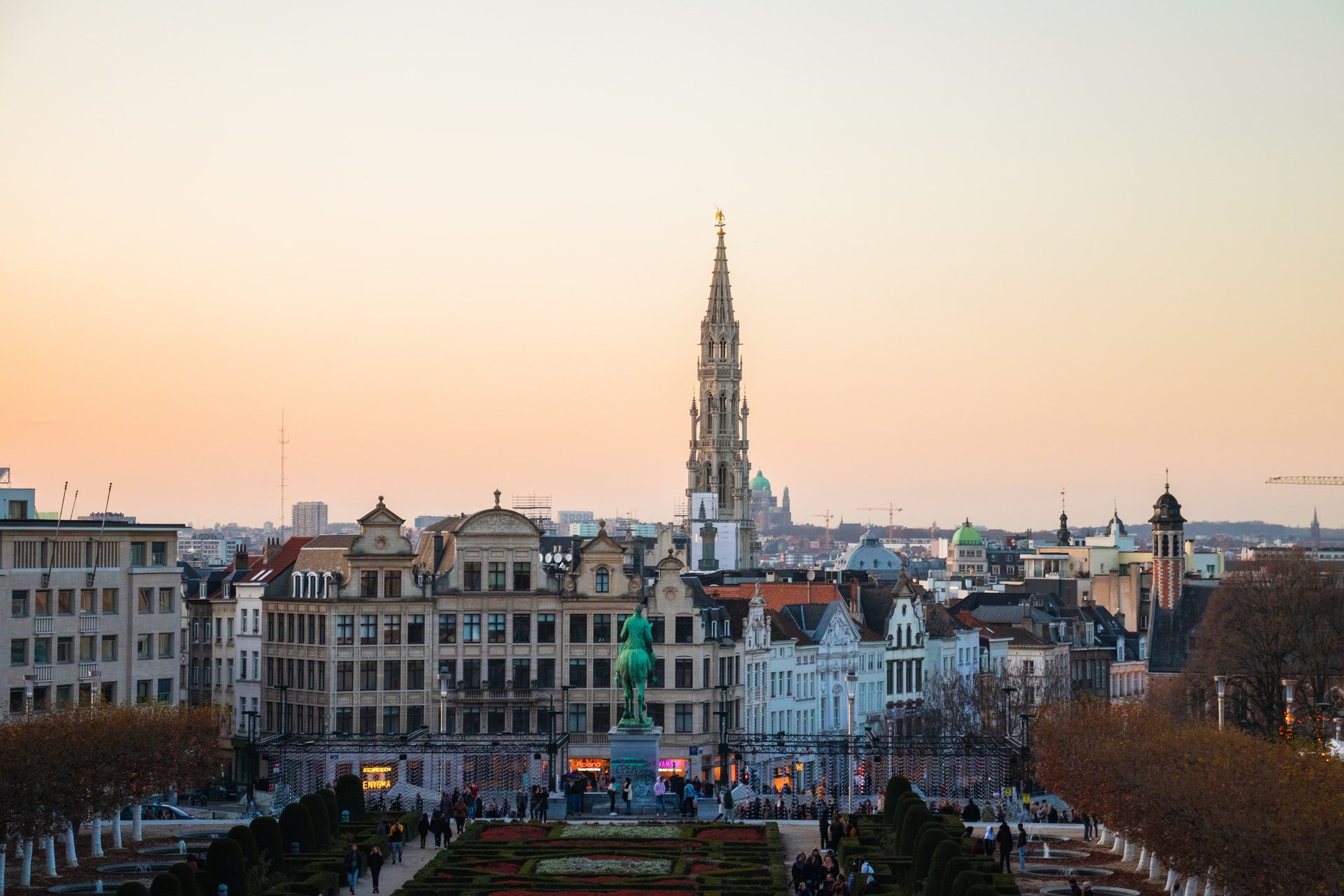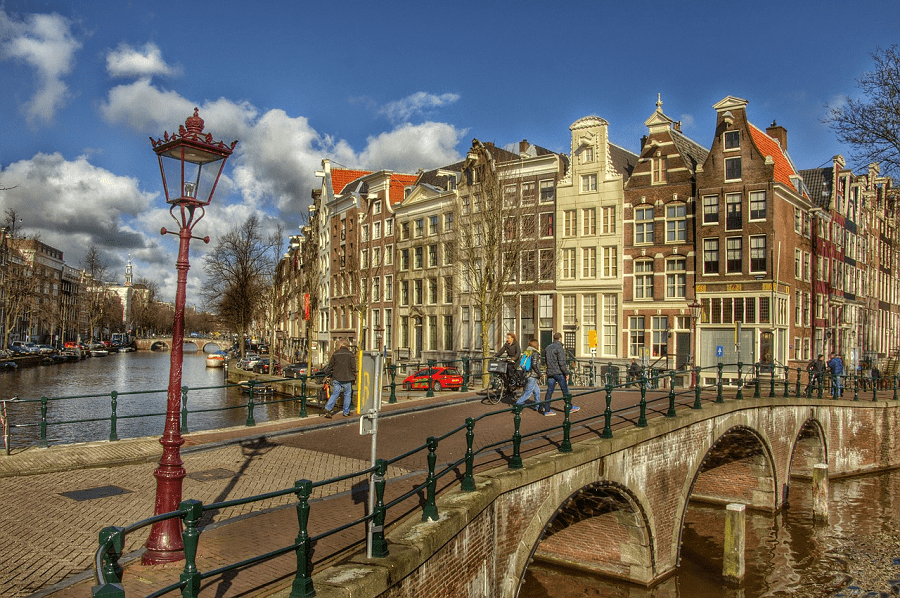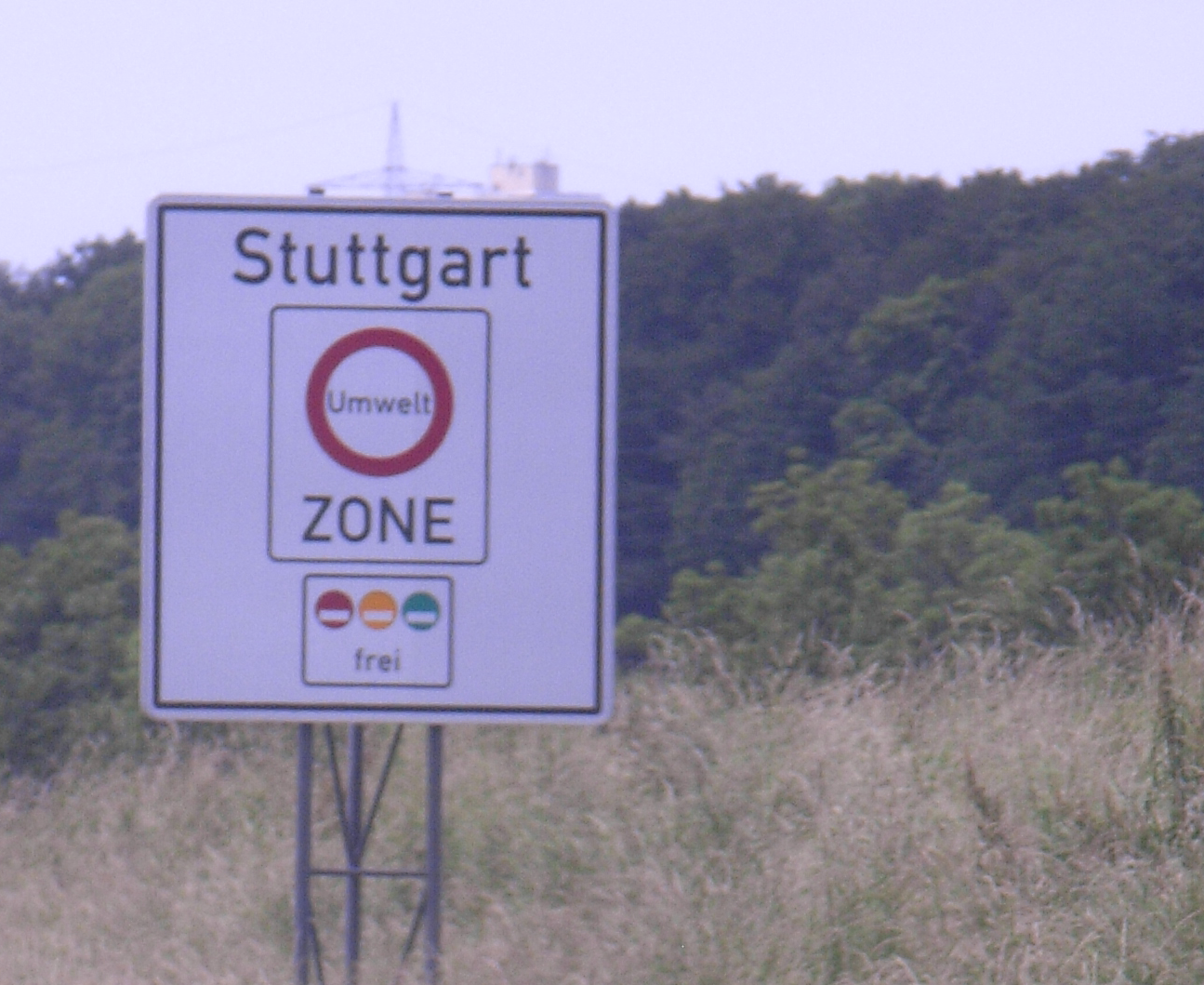
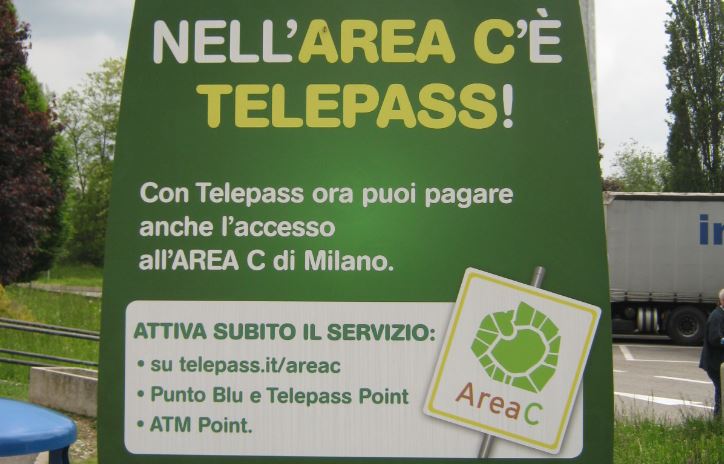
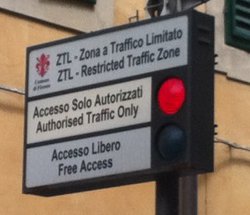
Our website provides all the information you need for Urban Access Regulations in Europe. Urban access regulations are where certain types of vehicles are regulated or restricted from entering a part of an urban area.
Urban Access Regulations regulate the use of city roads to help resolve issues such as air pollution, noise or congestion.
The Three Main Types of Scheme
Low Emission Zones
Urban Road Tolls, or Congestion Charges
Major Access Regulations
Why Access Regulations?
Air Pollution
Congested streets
Road Accidents
Attractiveness
Noise
Impacts of Access Restrictions
There are three types of scheme:
![]() Low Emission Zones where access is regulated by vehicle emissions. Full details are found on our city pages, with all the information you need. These schemes have the LEZ logo on the scheme button on the city page.
Low Emission Zones where access is regulated by vehicle emissions. Full details are found on our city pages, with all the information you need. These schemes have the LEZ logo on the scheme button on the city page.
![]() Urban Road Tolls where access is regulated by payment. Full details are found on our city pages, with all the information you need. These schemes have the € logo on the scheme button on the city page.
Urban Road Tolls where access is regulated by payment. Full details are found on our city pages, with all the information you need. These schemes have the € logo on the scheme button on the city page.
![]() Other Urban Vehicle Access Regulation Schemes (UVARs) where access is regulated by other requirements also referred to on this website as 'key-AR'. This is where for example a permit is required to enter an area, or access allowed at certain times of the day. These are also known as Traffic Restrictions, Permit Schemes or in Italy ZTLs. Our website provides all the information you need on the schemes that operate in the larger or more touristic cities. Pedestrian areas or parking schemes are not generally included. If you have information on schemes that we do not yet cover, This email address is being protected from spambots. You need JavaScript enabled to view it., and this will help us increase the number of schemes we detail on our website. This data is not comprehensive, but the numbers of schemes in this category will increase over time. Full details are found on our city pages, with all the information you need. These schemes have the several vehicle types logo on the scheme button on the city page.
Other Urban Vehicle Access Regulation Schemes (UVARs) where access is regulated by other requirements also referred to on this website as 'key-AR'. This is where for example a permit is required to enter an area, or access allowed at certain times of the day. These are also known as Traffic Restrictions, Permit Schemes or in Italy ZTLs. Our website provides all the information you need on the schemes that operate in the larger or more touristic cities. Pedestrian areas or parking schemes are not generally included. If you have information on schemes that we do not yet cover, This email address is being protected from spambots. You need JavaScript enabled to view it., and this will help us increase the number of schemes we detail on our website. This data is not comprehensive, but the numbers of schemes in this category will increase over time. Full details are found on our city pages, with all the information you need. These schemes have the several vehicle types logo on the scheme button on the city page.
![]() Emergency Pollution Schemes. These are schemes that are in place when the air quality is predicted to be bad, or where the air quality has been bad for a number of days. 'Bad' usually means over the legal limits. When they are in place, there can be many different types of regulations. These can be lower speed limits, a temporary LEZ, advice not to drive, and/or lower priced public transport tickets. See each city for the relevant regulations.
Emergency Pollution Schemes. These are schemes that are in place when the air quality is predicted to be bad, or where the air quality has been bad for a number of days. 'Bad' usually means over the legal limits. When they are in place, there can be many different types of regulations. These can be lower speed limits, a temporary LEZ, advice not to drive, and/or lower priced public transport tickets. See each city for the relevant regulations.
Some schemes are combined, so have more than one logo on the scheme button on the city page.
For more information, you can either go to the:
- More detail on why these schemes are implemented can be found for Low Emission Zones, Urban Road Tolls, and Access Regulations.
- through our city search on the top of most pages (below the menus).
- Via the individual page for each city or country, available from the Countries menu (for LEZ, charging and other Urban Vehicle Access Regulation Schemes)
- navigate our fully interactive map.
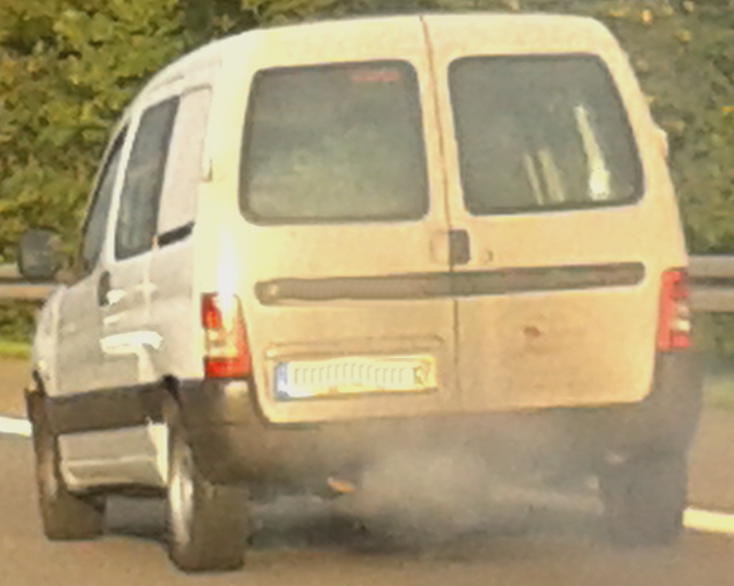
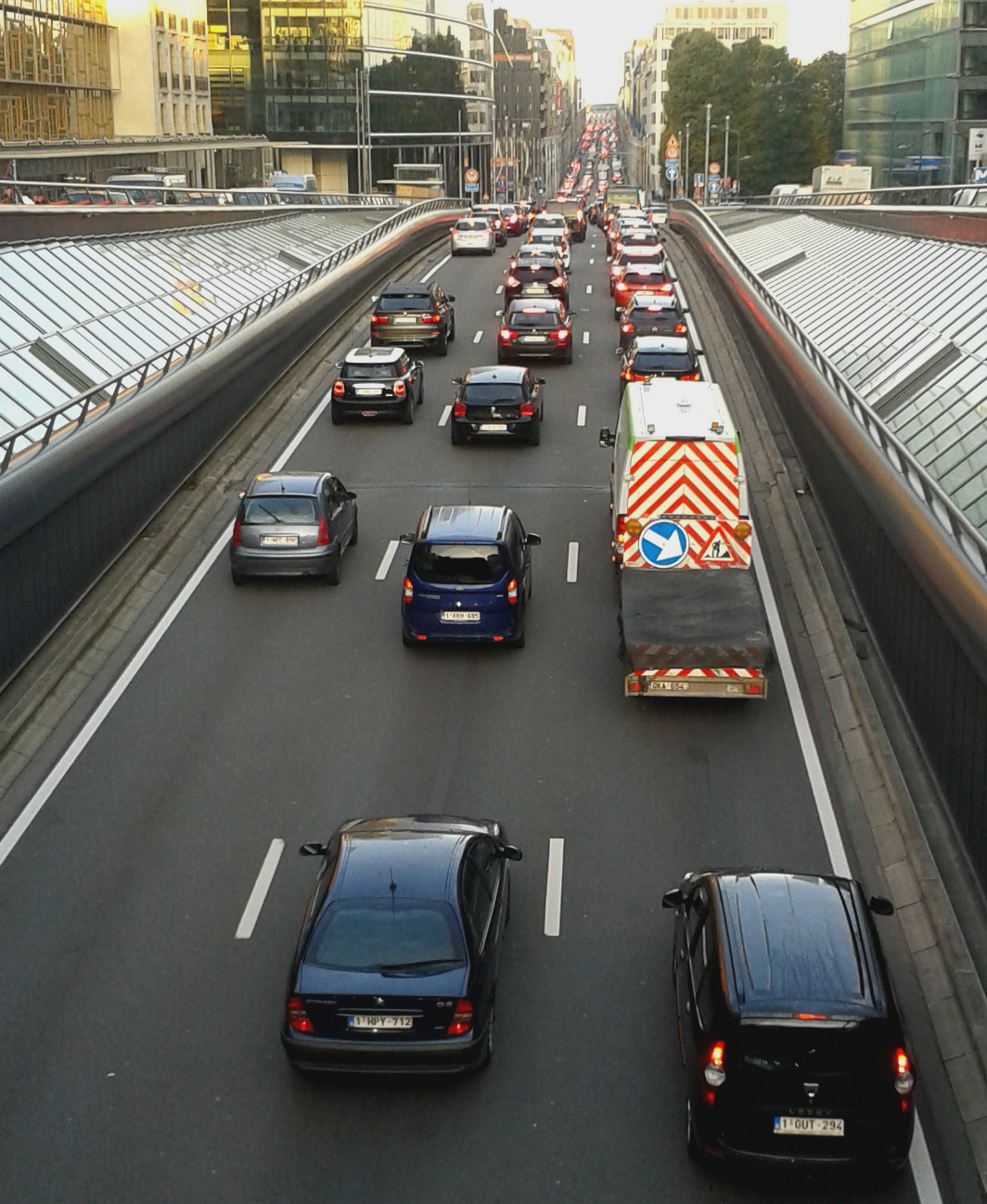
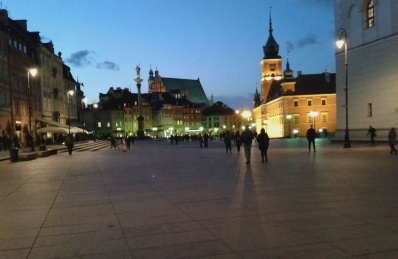
Why Urban Vehicle Access Regulations?
Many cities and towns struggle with the balance of congestion, ‘liveability’, air pollution, noise levels, accessibility, damage to historic buildings and other pressures of urban life. Many cities have levels of pollution that adversely affect health. Congested, polluted, noisy cities are not attractive for residents, tourists or businesses.
There are many ways to try to tackle these issues, and regulating the vehicles or trips that access parts of the town is one. The most simple type of Access Regulation is a pedestrian zone, which can very much improve the attractiveness of a tourist attraction or shopping centre. Our website does not generally include pedestrian zones, as they occur in almost every town, and those who need to deliver to the shops have contact with the shops and so know about the scheme. Some pedestrian zones are included under physical restrictions and we include some of the larger schemes under key ARS.
Generally Access Regulations balance the need of vehicles to access an area, with a reduction in the number of vehicles entering the area. For example, encourages commuters to travel by public transport, cycle or foot.
Physical Traffic Restrictions are also often in place when a road is too narrow or bridge not strong enough for certain vehicles. These are covered under physical traffic restrictions on our website. Physical traffic restrictions also include many pedestrian zones and where lorries are only allowed to travel through towns and villages for deliveries or access. These last two types of schemes are very common, and it might be that our database does not include them all. If you are driving a heavy duty vehicle, you will be aware that you are often not allowed to drive through many cities, towns or villages, and the major roads around the towns should be used with preference.
Air Pollution
One of the reasons for Access Regulation Schemes is air pollution.
Air pollution is responsible for 310 000 premature deaths in Europe each yeari. This is more deaths than caused by road accidents. The human health damage from air pollution is estimated to cost the European economy between €427 and €790 billion per yeariii.
Air pollution most affects the very young and the old and those with heart and lung diseases. Heart and lung diseases are both common causes of death in Europe. Air pollution also triggers health problems like asthma attacks and increases hospital admissions and days off sick. Diesel emissions have been classified as carcinogenic (causing cancer) by the World Health Organisation, which means that reducing diesel emissions is especially important for health. You can find out more details on these issues from the World Health Organisation air quality pages.
We can also consider the impact of air pollution on life expectancy [how long people can expect, on average, to live]. The following map left hand map shows an estimate of how many months life expectancy was reduced by man-made fine particles across Europe in 2000. The right hand map shows the months estimated when the many measures for air pollution have been implemented, in 2020iv. This shows the improvement that can be achieved with different air quality measures, for example cleaner Euro standards and Urban Access Regulations.
© European Environment Agency (EEA)
The third map below shows the estimated years of life lost (YOLL) in 2005 attributable to long-term PM2.5 exposurev. This shows slightly different things, but gives a guide to the improvements from the year 2000 above.
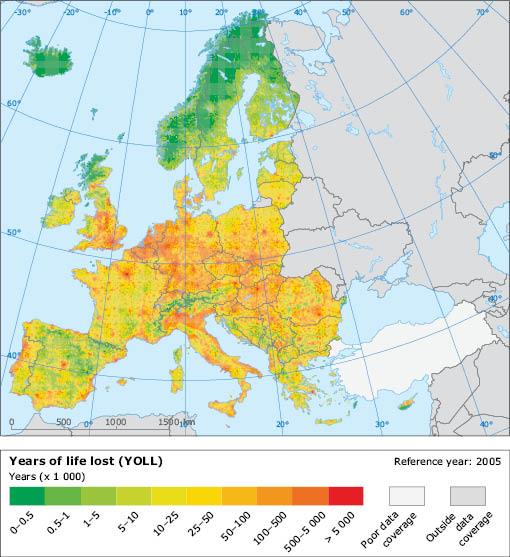
© European Environment Agency (EEA)
Congested, polluted, noisy cities are not attractive for businesses or residents. Congestion also has a significant impact on the economy, costing nearly €100 billion, or 1% of the EU's GDP, annuallyvi. The different types of Urban Access Regulations can reduce traffic and congestion in a city, and ensure that those that need to travel with a vehicle - for example deliveries - can travel rather than sitting in a traffic jam.
There are an estimated over 4 million incidents in the EU every year. There were 39000 fatalities in the EU in 2008. 23% of fatal accidents in built-up areas affected people under the age of 25. Less traffic and well planned streets in urban areas can lead to fewer accidents. vii
Many cities in tourist areas control access to parts of the urban area. Those visiting and bringing money into the cities do not want to see traffic jams or rows of tour buses. This is particularly the case for many Italian cities, with Zona a Traffico Limitato (ZTL).
A congested city or town is also not attractive to residents and businesses. Businesses cannot deliver the goods they need. Residents spend lots of time in traffic jams.
Noise
High levels of noise have an impact on our health. It can have negative impacts on the cardiovascular system, mental health, work performance, ability of children to learn, sleep quality and social behaviour. Children, people with existing physical and mental illness and the elderly are the most susceptible to these noise effects.
Estimates of exposure to environmental noise indicate that in 2011 it contributed to at least:
- 900 000 additional cases of hypertension,
- 43 000 additional cases of hospital admissions,
- 10 000 cases of premature mortality each yearviii.
These numbers are likely to be significantly underestimated, potentially by more than a factor of two.
In terms of economic impact, noise from road and rail traffic is estimated to cost the EU €40 billion per yearix. Almost 90% of the health impact caused by noise exposure is associated with road traffic noisex.
Impacts of Access Restrictions
Access restrictions have been found to be effective in many cities. For examples see the separate impacts pages for low emission zones, road tolls and other access regulations.

